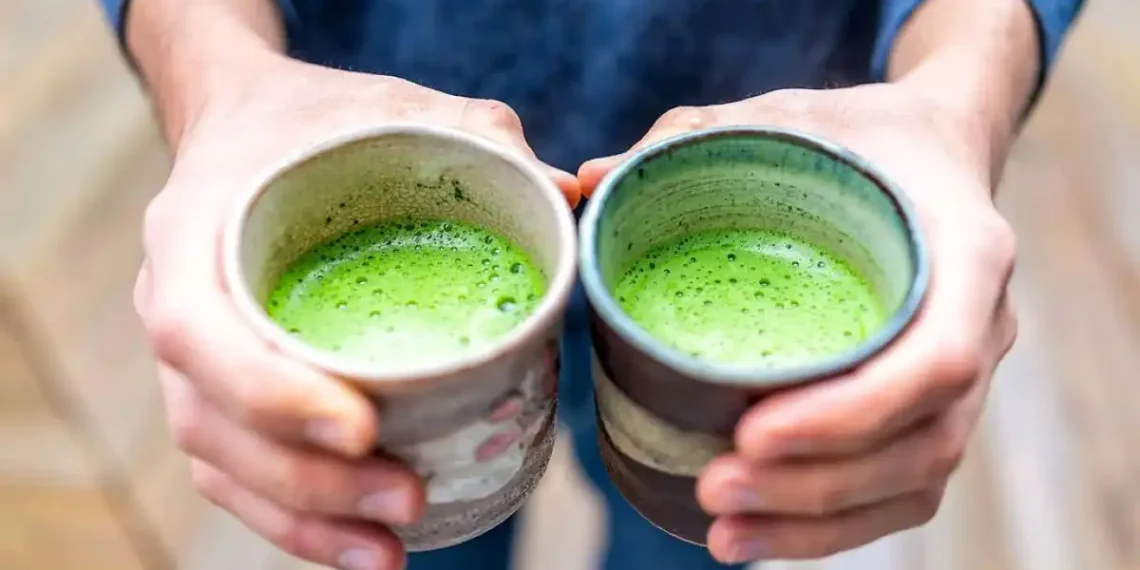Certainly! Here’s a rewritten, reorganized, and more conversational version of the article, tailored for a news blog audience with a friendly, engaging tone:
Who Drank All the Matcha? How Tourism Is Draining a Japanese Town’s Beloved Green Treasure
If you’ve ever dreamed of sipping the finest matcha in Japan, you might want to hurry to Uji — before the tins run out.
Uji: Japan’s Matcha Capital Under Pressure
Just a 30-minute train ride from Kyoto, Uji is famous worldwide for its matcha — that vibrant, finely powdered green tea that’s whisked to frothy perfection. But recently, the town has found itself at the center of a matcha frenzy. Demand, driven by soaring global popularity and a record-breaking influx of tourists, is far outstripping supply. Locals are beginning to worry: is their treasured tradition being stretched too thin?
The Morning Matcha Rush
10:00 AM is a big moment in Uji. That’s when matcha shops swing open their doors. Arriving just before the hour, I head straight to Nakamura Tokichi Honten — a historic tea shop that once supplied the emperor and now stands as one of the most prestigious matcha purveyors in Japan. The place is already buzzing. Despite arriving early, I find myself 35th in line, clutching a numbered ticket.
Inside, the shelves are packed with every imaginable matcha product — from ice cream and sweets to matcha-infused noodles. But I’m after the real prize: tins of pure matcha powder. That’s when the scene gets wild. A shop worker tries to restock, but as soon as a tin hits the shelf, it’s snatched up by eager tourists. Some even reach right into her basket to grab cans before they’re even placed down. Shouts in Japanese go unnoticed amid the chaos.
Before long, the precious tins are gone. A woman near me exclaims in an American accent, “It’s gone. All the matcha’s gone.” And it’s barely 10:05 AM.
Matcha Mania: Tourists Stockpile, Locals Watch Uneasily
I manage to grab a small 30g tin, unsure if I’ve gotten the premium stuff or something milder. Meanwhile, a man ahead in line carries off a staggering 30 tins, proudly admitting he just dropped 250 euros on tea. Unlike some other shops, Nakamura Tokichi doesn’t limit how much you can buy — meaning some visitors hoard huge quantities.
Around town, it’s the same story. Tsujirihei Honten, another respected shop, advertises dozens of matcha varieties but has only a handful left in stock. Many stores are sold out or limiting purchases, but demand remains overwhelming.
Why Is Matcha So Popular — and So Scarce?
Matcha’s global popularity has exploded in recent years, thanks to its antioxidant-packed health benefits and its trendy, photogenic appeal on social media. Japan produced over 4,000 tons of matcha in 2023 — triple what it did in 2010 — while tourism hit record highs, with nearly 37 million visitors in 2024 alone.
But producing authentic Uji matcha, especially the highest-grade ceremonial kind, isn’t easy or quick.
Tomomi Hisaki, general manager of Tsujirihei, explains that top-tier matcha comes from tea leaves grown in shade to develop that rich, umami flavor. But the trade-off is a smaller harvest — if the plants get too little light, they simply won’t grow well. Then there’s the stone mills, which grind leaves into powder at a painstakingly slow rate — about 400 grams in eight hours per mill. That’s only enough for around 13 tins!
Adding more farms could help, but new crops take years to mature. So for now, supply is stuck far behind demand.
Tradition vs. Trend: The Cultural Cost of Matcha Tourism
This scarcity only adds to matcha’s allure — especially for tourists eager to grab premium ceremonial powder. But locals and tea experts worry about what’s being lost.
Simona Suzuki, president of the Global Japanese Tea Association, notes that some ceremonial matcha is now being used in lattes and smoothies — a far cry from the traditional tea ceremony. This shift threatens the availability of top-quality matcha for those who want to enjoy it authentically.
“It’s important visitors consider the intended use before bulk buying,” Suzuki urges.
Why Hoard Matcha? A Question of Taste and Tradition
Watching tourists stockpile tins worth hundreds of euros, I wondered: what happens to all that matcha? Likely, many use it as a trendy ingredient in sweet drinks or baked goods rather than savoring it in the traditional way. And for many, distinguishing between the grades is tricky — plus, matcha loses its freshness sitting unopened for months.
Still, it’s tempting. When you’re far from home in the birthplace of matcha, resisting the urge to grab as much as possible can feel impossible.
A Hopeful Message From Uji’s Tea Masters
Hisaki remains optimistic. “It’s wonderful that Japanese matcha is spreading worldwide,” she says. “I want people to enjoy it for health, ceremonies, and cultural heritage.” But she asks visitors not to hoard or resell the precious tea.
If you can’t snag ceremonial matcha, don’t despair. Uji offers plenty of other delightful tea experiences — from vibrant sencha and earthy gyokuro to hojicha, a roasted tea with nutty, chocolatey notes that many locals prefer over matcha.
Matcha, Beyond the Powder
Uji feels like a tea-themed wonderland. At Nakamura Tokichi, I enjoy tea-infused soba noodles and a luscious matcha parfait. Souvenir shops offer matcha fettuccine, curry, and even matcha gyoza, takoyaki, and ramen.
At Tsujirihei, I buy sweetened matcha powder designed to dissolve easily in water — perfect for a quick matcha latte. Sitting back with my warm, vibrant drink, I think: it might not be emperor-worthy, but it’s just right for me.
In the end, the matcha shortage in Uji reveals a bittersweet truth: as the world falls in love with this ancient tea, the delicate balance between tradition and tourism hangs by a thread. But with mindful appreciation, there’s hope that Uji’s green treasure will continue to enchant visitors for generations to come.
This article was rewritten by JournosNews.com based on verified reporting from trusted sources. The content has been independently reviewed, fact-checked, and edited for accuracy, neutrality, tone, and global readability in accordance with Google News and AdSense standards.
All opinions, quotes, or statements from contributors, experts, or sourced organizations do not necessarily reflect the views of JournosNews.com. JournosNews.com maintains full editorial independence from any external funders, sponsors, or organizations.
Stay informed with JournosNews.com — your trusted source for verified global reporting and in-depth analysis. Follow us on Google News, BlueSky, and X for real-time updates.














